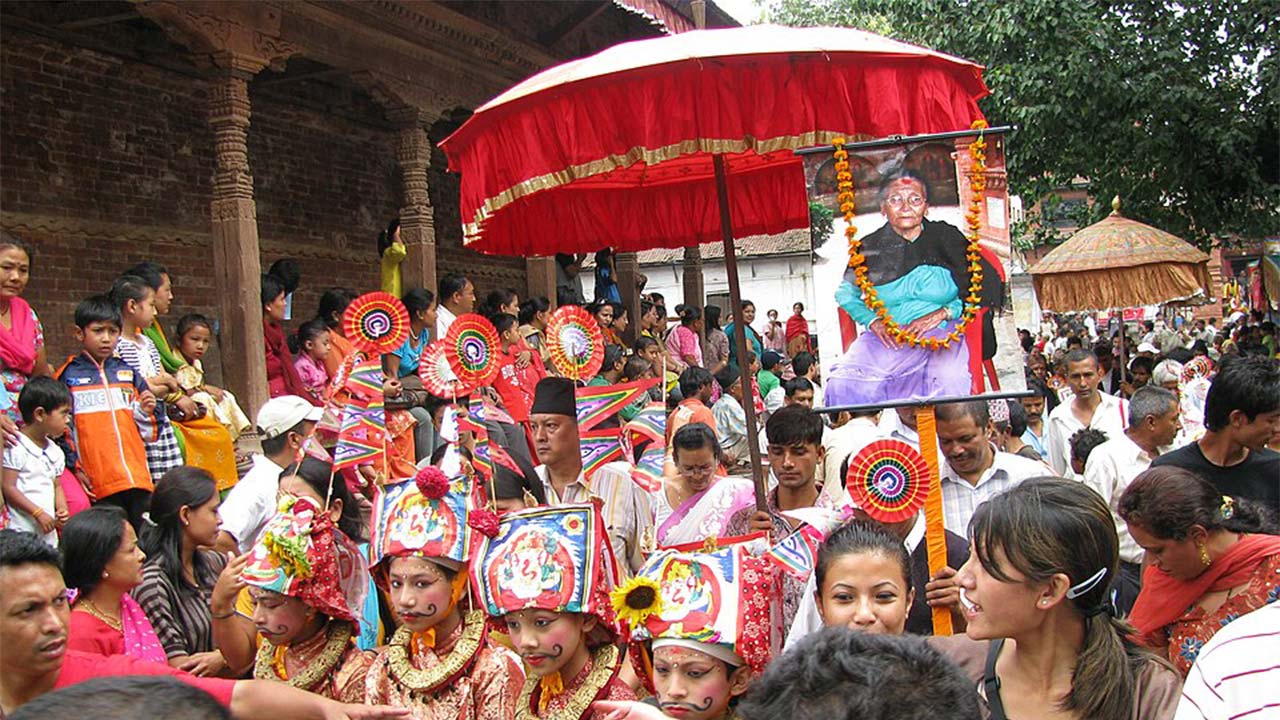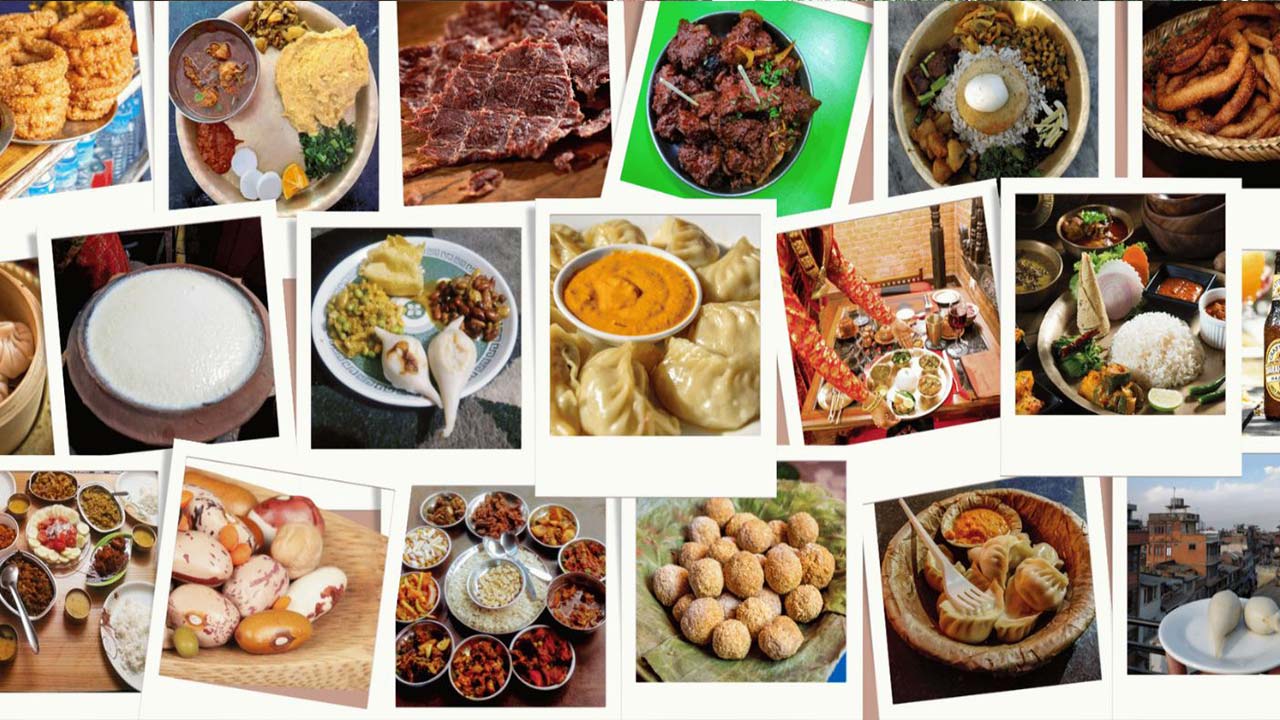This mountain capital city of Nepal presents a bewitching confluence of history, events, adventures, and spiritualism. Back in the Himalayas, heritages and the wealth of ancient temples and stupas are complemented by UNESCO World Heritage areas: Kathmandu Durbar Square, Swayambhunath Stupa, and Pashupatinath Temple. These historical buildings are the repository of the continuous cultural-rootedness of the city, which testifies its spiritual heritage in that regard. It would then provide an immersive experience for those addicted to historical, traditional, and cultural exploration within Kathmandu and, by extension, Nepal.
Kathmandu is fun for adventure enthusiasts because this is the best entry point to Himalayan mountains and trekking paths such as Everest Base Camp or the Annapurna Circuit, Nestled in the valley of the Himalayas; but it's not only trekking that brings you here; Kathmandu has a full palette of thrilling activities, from paragliding to mountain biking, through to the most thrilling of white-water rafting. Here, you will also find stunningly peaceful places for meditation and reflection in many of her Hindu temples and Buddhist monasteries. It welcomes them all, from adventure people to culture people to pampered spiritualists.
A Journey Through Kathmandu's Rich History and Culture
Kathmandu is known as the "City of Temples." This city is a living monument of the rich cultural heritage and spiritual bequest of Nepal. As the capital city of Nepal, this lively city has an established architectural treasure of old temples, shrines, and palaces that articulate the story of a beautiful past. Kathmandu is off an UNESCO World Heritage Site, still preserving some of the most indispensable historical and religious wonders of Nepal. Its emblematic Newar architecture and shimmering traditions have to put it on the to-visit list for anyone trying to immerse oneself in the culture and history of Nepal.
Kathmandu Durbar Square, which lies almost at the center of the city, happens to be among the most popular landmarks in Kathmandu. This historical square contains, among its treasures, magnificent temples and palaces that are very finely carved and have open courtyards, as indeed it was the royal palace for the Malla kings. The wonderful ancient architecture with really peculiar woodwork and pagoda-style buildings adds discourse to the history of royal Nepal. Another place that one could go to visit here is Swayambhunath Stupa, commonly known as the Monkey Temple, which has raised its height high above a hill of the valley and gives a place with some inside and sensational views. Swayambhunath used to be considered the oldest religious complex, at present igniting interest among both dals and ambers with its colorful stupas, prayer wheels, and cheeky monkeys.
Pashupatinath Temple: A highway to serenity for all spiritual folks, it is the famous Hindu shrine claimed to be the largest shrine of Hindus upon this earth, attracting pilgrims from every corner of the world, wherein it is believed Lord Shiva worships. The temple concerning Lord Shiva is located at the banks of the Bagmati River, attracting the visitor with traditional Hindu rites and cremations to witness.

A connection of great historical and spiritual significance is thus engraved in the memories of tourists that grant them sight and people-to-people experiences in both the cultural landmarks and spiritual festivals. From the aged Durbar Square, scenic beauty brokers to Swayambhunath Stupa, gazing down on spiritual rituals at the inflaming Pashupatinath Temple, the great Kathmandu city illustrates trekking through life everlasting through the hands of Nepalese heritage. The temples standing tall as rare witnesses of the trials and tribulations and charm of the culture of Nepalese are among the UNESCO World Heritage Sites.
Kathmandu: A Gateway to Adventure
Nepal's capital city Kathmandu is the cultural core for many things, but it is also one of the top places to start some of the most famous trekking adventures in the world. It is the access point of the Himalayas, where one can easily Trek to Everest: Base Camp, Annapurna Circuit, Langtang Valley Trek among others and turn Kathmandu into an adventure center in its own right where trekkers begin the hikes against the great towering peaks of the Himalayas and enjoy magnificent mountain views and get to know the varied landscapes of Nepal. Trekking will turn out to be a real adventure of a lifetime for explorers eager to cross borders in the name of viewing amazing and hard-to-reach regions in Nepal, from cultures to majestic natural scenery to rugged villages hidden within the mountains.
Besides high-altitude trekking, Kathmandu has other pure adventure sports for those who are not so keen on altitude or want a thrill but with less stress. The hills and valleys around Kathmandu are wonderful enough to offer one of the best paragliding spots, full of adrenaline thrills, also with a great view over the city and the Himalayas. Mountain biking, white-water rafting, and more; for people who would like to enjoy their adventure on Nepal's rugged side, mountain biking along with white-water rafting has found a profound popularity among challengers. A lot of rivers and trails surrounding these locales offer some of the most exciting adventures for serious and casual adventurers alike.
So whether you are hiking, biking, or rafting, Kathmandu's incredible natural sceneries are surely the most enjoyable playground anyone can find to challenge any thrill-seeker.
Kathmandu’s Vibrant Streets: A Blend of Old and New
Kathmandu holds within itself perhaps the most wonderful element, which is its vibrant and always-active streets where history and the present collide. Part of this has to do with the area known as Thamel, which caters almost exclusively to the visitor crowd with a mix of markets, shops, cafes, and night vibrance. As you meander through the congested serpentine alleys and experience the jumble of eclectic traditional Nepalese handicrafts, Tibetan prayer flags, pashmina shawls, and thangka paintings, one can call it a shopper's heaven. Every store is full of locally made items that are fit to be perfect souvenirs or gifts to take home, a personal touch given to your experience of the city.
Kathmandu's streets are anything more than a shopping avenue; they live alone by themselves. The air carries the scent of street food such as momos, sel roti, and chowmein. It tells passersby that they ought to stop here and take a dive into the local flavors. It's that sound of prayers, chants, and the fast action of vendors speeding by that make the whole experience both exciting and spiritual. This blend of the ancient with the modern amenities available around makes Kathmandu one of the unique and memorable places with a perfect mix of traditional and contemporary life.
Food Adventure in Kathmandu
This city, known as Kathmandu, is truly a paradise for all food lovers. It's a place where Nepali, Indian, Tibetan, and world cuisines all thrive and flourish. Kathmandu improves its already rich food culture with the addition of bolder and aromatic spices and relishes with traditional cooking techniques that make it a must-visit for gastronomes. Try to take a bite of the most popular item in Nepal: momo. Talk about Nepal's heavenly dumplings dripping with meat or vegetables. Then there is Dal Bhatt, literally meaning lentil water with rice: something of that stature, just enough for making one's stay comfortable and well-feeling: one of the many staples of Nepali food. Here is something sweet and ring-shaped like a doughnut made with rice just for you - Sel Roti. Complementing everything savory, it has become very dear to the local palate. Every single bite is savored for its mere taste of the culinary heritage of Nepal.

Kathmandu's food scene goes way beyond local delights. In fact, the city also has a wide range of international restaurants-italian pasta to Thai curry. Whether you prefer street food or fine dining, Kathmandu is great for satisfying all taste buds in an exciting food experience. So many options mean each meal becomes an adventure, and Kathmandu should tickle your taste buds.
The Spiritual Vibe of Kathmandu
Kathmandu has not gone to be a cultural haven or paradise for adventure seekers only but can also be a source of refuge for those looking to satisfy spiritual needs and search for inner peace and enlightenment. The city is also rich in sacred physical locations that capture local and international tourists in search of spiritual fulfillment. The most well-known Buddhist stupas, for example, Swayambhunath, also known as the Monkey Temple, and Boudhanath, are here easily accessible, and both have calm, meditative environments. These stupas are among the oldest and most important pilgrimage destinations where many experience otherwise private and quiet rituals of Buddhism. Along with its Buddhist temples, Kathmandu contains the Pashupatinath Temple, one of the holiest temples of Hinduism across the globe. To sit by the banks of the Bagmati River, Pashupatinath is a pilgrimage for devotees who come to pray while witnessing some traditional Hindu ceremonies being held here.
Blessed with innumerable chances to enrich your spirit- watching puja, meditating in one of the numerous temples, or simply lounging in a blissful atmosphere- Kathmandu's energies are benevolent. The calm of the mountains and ancient sacred sites creates a perfect atmosphere for self-introspection and healing for the city. The spiritual energy of Kathmandu calms the mind while refreshing the soul and deepening the union with serenity and God.
Best Time to Travel to Kathmandu
Kathmandu is at its best around the spring season- March to May but it is also good for autumn visits - September to November. During this time, the weather remains pleasant and is fit for seeing the sights, cultural sites, and some outdoor pursuits.
Spring is characterized by an explosion of colors in flowering plants; pleasant weather for any exploration of historical temples and colorful street tours in the city.
Autumn skies are clear, with cool air filled with picturesque views of the hills and mountains. Autumn - the best trekking time since the weather is mild-in fact, this time allows one to engage in various mountain trail exploits both in the Everest Base Camp and Annapurna Circuit with superb options for trekking and outdoor adventures.
Means Of Entry Into Kathmandu
Trekking is what makes this city known as the breathtaking capital of Nepal. The Tribhuvan International Airport, which is the world point for international travelers coming to the country, be it from India, China, the Middle East, or further afield, plays a big role in international bookings that offer direct flights into the city. But with regards to the airport, it gives all international travelers excellent links into and out of the city to the world.
Kathmandu is almost always well connected to major parts of the country in Nepal. From the other major cities such as Pokhara, Chitwan, and Lumbini, traveling to the capital is just one bus or car ride away. Domestic airlines connect Pokhara and Lukla to the country, effectively the most important point of departure for trekkers going to Everest. Other main domestic carriers flying into and out of Kathmandu include Yeti Airlines and Nepal Airlines, among others. The traffic network is very well set up in Nepal, meaning smooth and comfortable access to Kathmandu, whether it be by air or overland.
Why you should travel to Kathmandu next
A city in itself is much more than literally a living, breathing museum in which every alley, temple, and market speaks a fascinating history of the rich history and culture of Nepal. There are historic temples and monuments in Kathmandu, UNESCO-listed sites, and vibrant streets that attract people worldwide. If you enjoy trekking in the majestic Himalayas, or if you are a history buff exploring ancient monuments or a foodie seeking special flavor experiences, Christianity, spiritual travel-seeking, or, quite simply, seeking some peace and reflection, there is something special in Kathmandu for everyone. Ancient culture meets modernity in Kathmandu while gazing at stunning natural beauty, making every moment unforgettable.
From trekking to Everest Base Camp to the lively streets of Thamel, Kathmandu is a city where one can barely explore all its many shades. Enjoying the travel vibes of admiring its historic landmarks as much as its delicious local dishes, every turn will spellbind you with the magic of Kathmandu. So then, pack me for the dive into the vibrant charm of Nepal's capital corner, which is alive with a story waiting to be discovered!
For your travel expedition, Why Opt for Eco Holidays Nepal?
Several compelling reasons underline carrying the above into consideration while choosing Eco Holidays Nepal for travel:
-
Responsible tourism travel packages are all about using a sustainable approach in the promotion of travel and tourism, encouraging minimum environmental impacts, encouraging conservation efforts, and creating an income-generating industry for local communities.
-
Real Experiences: It allows pure experiences where travelers will enjoy connecting with the culture and nature of Nepal and its people by inviting travelers away from the mass tourism.
-
Tailor-Made Packages Travel: Eco Holidays Nepal offer personalized travel traveling-they developed an itinerary for you that meets your individual interest and need-be it trekking, culture-sightseeing, or wildlife experience.
-
Responsible travel: This way you have supported responsible and ethical travel. They promote eco-friendly venue, transport, and activities.
-
Local Knowledge: Their staff has been in Nepal for many years and have developed a vast understanding of the landscapes, customs, and traditions, which will ultimately improve the quality of the trip.
-
Wildlife and Adventure: Nepal is famous for its great natural beauty which has had the effect of being very famous; Eco Holidays Nepal itself is a part of this dimension that offers unique value to wildlife safaris, trekking in the Himalayas, and exploring national parks in a green way.
-
Community Support: They build close relationships with local communities to encourage and realize rural development and job opportunities for people, thereby ensuring that your journey benefits the regions you visit.
-
Health and Safety: The tour company has well-trained guides and offers good service, whereby it is committed to ensuring that your health and safety are accorded importance throughout the trip.
Conclusion
Kathmandu is full of adventure and promise, with an admirable and rich history, vibrant culture, and endearing natural beauty. It is an exemplary tourism destination for all types of travelers- from hiking to the majestic Himalayas, exploring ancient temples, or local food culture. It never fails to give something spectacular for every traveler. Undoubtedly, warm hospitality and an incredible spiritual atmosphere, along with all modern conveniences, make Kathmandu appealing for both exploration and peace.

Eco Holidays Nepal is the right place to visit Kathmandu with some eco-friendly initiatives. Eco Holidays Nepal specializes in sustainable travel, and the trip to Kathmandu would be completely friendlier to the environment and exhilarating and real, including everything else about travel in Nepal. From eco-trekking tours to cultural offerings, Eco Holidays Nepal invites you to create memories of a lifetime while promoting sustainable development in Nepal and outside Kathmandu.
So, pack your bags, choose Eco Holidays Nepal, and ready yourself for a journey through the timeless beauty and spirit of the Kathmandu corner, telling a new story waiting to be discovered.
FAQs
When is the best time to visit Kathmandu?
The best time to visit Kathmandu is during spring that is from March to May and fall that is from September to November, when the weather remains pleasant for sightseeing and outdoor activities.
Which currency is used in Kathmandu?
The currency that is in circulation in Kathmandu is the Nepalese Rupee (NPR).
Do I need to get a visa to travel to Kathmandu?
Most travelers need visas to enter Nepal. Tourists may either apply online before traveling or obtain a tourist visa upon arrival at Tribhuvan International Airport.
What is the local language of Kathmandu?
The official language is Nepali, but visitors will hear a good deal of English in many touristy areas, hotels, and restaurants.
Is Kathmandu safe for tourists?
Generally, Kathmandu is safe for tourists, but general precautions about securing your belongings are always advised, just like in any large city; try to avoid lonely places at night.
What are the top attractions in Kathmandu?
The main attractions include Kathmandu Durbar Square, Swayambhunath (Monkey Temple), Pashupatinath Temple, Boudhanath Stupa, and Thamel.
Is there any trekking in and around Kathmandu?
Kathmandu is basically a gateway to some of the best trekking routes around the globe: Everest Base Camp Trek, Annapurna Circuit, and Langtang Valley Trek.
What are the must-try foods in Kathmandu?
Do not miss out on local delicacies such as momos, dal bhat, sel roti, and chowmein.
How do you get to the city from the airport?
Tribhuvan International Airport would have all the services of taxis, private transfers, and shuttle service to the city.
What is the climate of Kathmandu?
Kathmandu exhibits a temperate climate, mild winters, and warm summers. Temperature goes up and down with the seasons; winter is cool, while summer is hot and humid.
Does Kathmandu have ATMs?
Yes, there are plenty of ATMs in many areas in Kathmandu, especially touristy areas like Thamel. However, it is best to have some cash since some places might not accept cards.
What to take to Kathmandu?
Walking shoes are a must, light clothing for warm weather, warm clothes for cool evenings; if traveling in the monsoon season, a rain jacket. And definitely take proper gear for trekking, including a backpack and trekking boots and clothing.
How do you get around in Kathmandu?
Movement in Kathmandu is possible via taxi, bus, or rickshaw. Walking is also a good way to explore the city, especially in and around Thamel and Durbar Square.
Is it okay to drink tap water in Kathmandu?
Tap water in Kathmandu should be avoided for drinking purposes. Try to go for bottled mineral water or use a purifier for drinking water.
What can a typical Nepali wear?
Dressing up is not such a big issue in general. Kathmandu is more conservative, especially in places of worship. The big dressing rule should be to dress modestly, keeping shoulders and legs covered at least when visiting temples or stupas.

